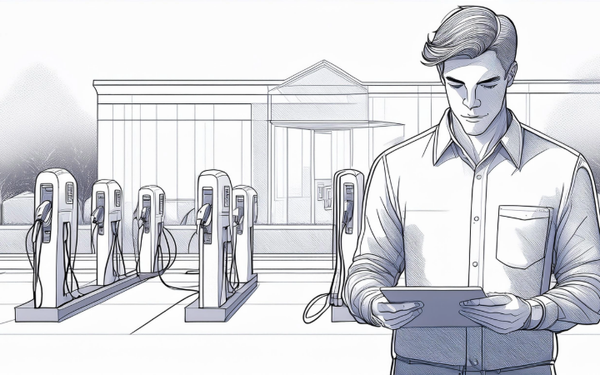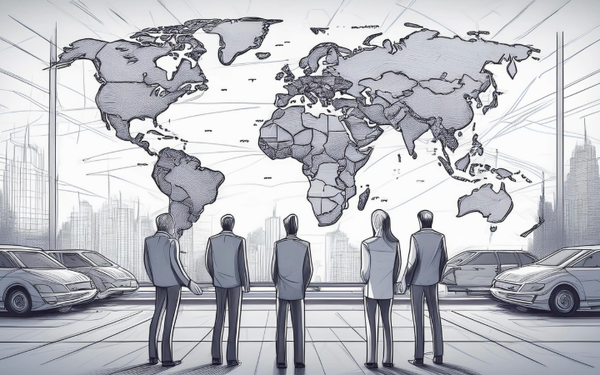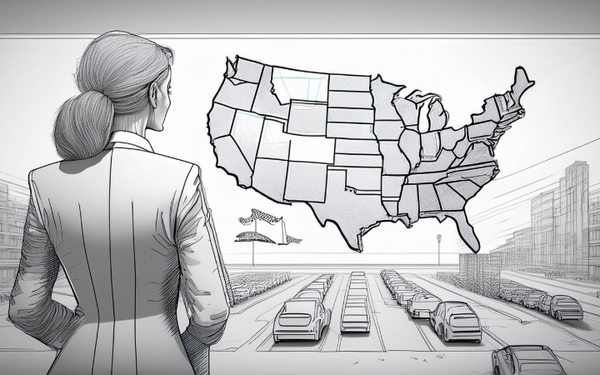Germany’s Progress in EV Charging Infrastructure: A Bright Future Ahead
Germany, known for its engineering prowess and automotive industry, is making significant strides in developing its electric vehicle (EV) charging infrastructure. This article explores Germany’s current state of EV infrastructure and offers predictions for the future.

Germany, known for its engineering prowess and automotive industry, is making significant strides in developing its electric vehicle (EV) charging infrastructure. As the nation accelerates its shift towards electric mobility, the challenge lies in balancing the number of EVs with the availability of charging stations. This article explores Germany’s current state of EV infrastructure, compares it to the number of EVs on the roads, and offers predictions for the future.
Current State of EV Charging Infrastructure
Germany has seen impressive growth in its EV charging network. As of 2023, the country boasts over 80,000 public charging points, a considerable increase from previous years. This network includes a mix of standard AC chargers and high-power DC fast chargers, catering to different charging needs and helping to support the increasing number of EVs.
Government Initiatives:
- The German government has been proactive in supporting the expansion of EV infrastructure. Initiatives such as the National Charging Infrastructure Plan aim to ensure that Germany has one million public charging points by 2030.
- Funding programs, like the €5.5 billion earmarked for charging infrastructure, help local authorities and private companies build more charging stations (IEA) (Statzon - Market Insight Platform).
Private Sector Contributions:
- Companies such as Ionity, a joint venture among major automakers, are instrumental in building a network of ultra-fast chargers along major highways. Ionity’s chargers provide up to 350 kW, significantly reducing charging times for long-distance travelers.
- Other private players, including EnBW and Allego, are also expanding their networks, contributing to a robust and reliable charging infrastructure across the country (McKinsey & Company) (ZapMap).
Comparing EV Charging Infrastructure to EV Numbers
Germany’s EV market is growing rapidly. By the end of 2022, over 700,000 battery electric vehicles (BEVs) were registered, marking a significant rise in EV adoption. This growth is driven by various factors, including government incentives, advancements in EV technology, and increasing consumer awareness about environmental issues.
Charger-to-EV Ratio:
- Despite the progress, the charger-to-EV ratio remains a critical metric. With around 80,000 public charging points for 700,000 BEVs, Germany has approximately one charger for every nine EVs. While this ratio is better than in many countries, it highlights the need for continued expansion to avoid future bottlenecks (IEA) (Statzon - Market Insight Platform).
Regional Distribution:
- There is a notable disparity in the distribution of charging stations across Germany. Urban areas and regions with higher EV adoption rates, such as Bavaria and Baden-Württemberg, have better coverage. In contrast, rural areas still lag, necessitating targeted efforts to ensure uniform infrastructure development (McKinsey & Company).
Predictions for the Future
Expansion Plans:
- The German government’s ambitious goal of reaching one million public charging points by 2030 reflects a strong commitment to supporting EV growth. Achieving this target will require sustained investment and collaboration between public and private sectors (IEA) (Statzon - Market Insight Platform).
- Technological advancements, such as ultra-fast charging and smart grid integration, will play a crucial role in enhancing the efficiency and convenience of the charging network.
Integration with Renewable Energy:
- A significant trend is the integration of renewable energy sources into the charging infrastructure. Using solar and wind energy to power charging stations will help reduce the overall carbon footprint and support Germany’s renewable energy targets (ZapMap).
- Vehicle-to-grid (V2G) technology, which allows EVs to feed energy back into the grid, will also become more prevalent. This innovation helps balance the grid and provides an additional revenue stream for EV owners.
Consumer Adoption and Infrastructure Needs:
- As the cost of EVs continues to decrease and battery technology improves, consumer adoption is expected to rise sharply. This increase in EV numbers will necessitate a corresponding expansion of charging infrastructure to prevent congestion and ensure accessibility.
- Public awareness campaigns and incentives for installing home chargers will further support the transition, ensuring that even areas with lower population densities have adequate charging facilities.
Conclusion
Germany is making commendable progress in building its EV charging infrastructure, setting a strong foundation for the future of electric mobility. With a robust mix of government initiatives and private sector investments, the country is well on its way to achieving a comprehensive and efficient charging network. However, to meet the growing demand and ensure a seamless transition to electric vehicles, continued focus on expanding and enhancing the infrastructure is essential.
As Germany leads the charge towards a sustainable transportation future, the advancements made today will pave the way for a greener, more efficient tomorrow.
For more detailed information, you can refer to:





